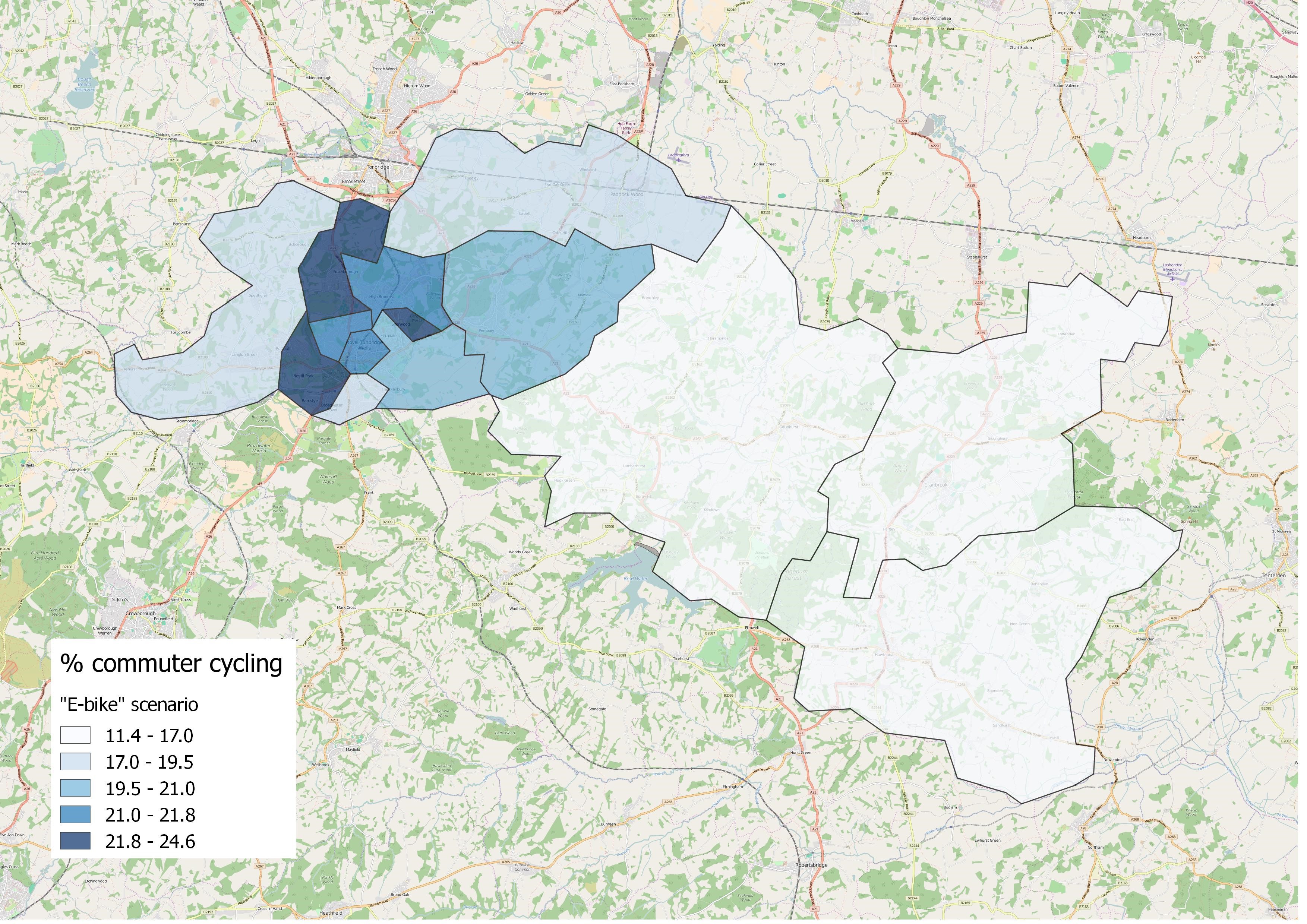Cross-posted from the PCT blog
Tomorrow evening (15th September) James Woodcock and I are presenting the Propensity to Cycle Tool (PCT, www.pct.bike) to stakeholders at the lovely Velo House in Tunbridge Wells. We’ll be talking about what the tool can tell us about cycling potential in Tunbridge Wells and in Kent.
One important thing I think the tool shows is the substantial potential for cycling outside the large metropolitan centres. For a range of reasons, such as pressures on road space and congestion, cycling as an efficient mode has attracted growing interest in cities like London, Bristol and Manchester.
Smaller cities and towns are losing out. But our ambitions shouldn’t be limited to ‘cycling cities’ – in some ways, smaller conurbations have more to gain from cycling. They tend to be more car dependent than our big cities, meaning a potentially greater mode shift away from the car for a given amount of extra cycling. And in smaller cities and towns, while car ownership is high, those people without car access may face particularly high levels of exclusion – because the assumption is that everyone has a car.
I’ve been writing a series of case studies using the PCT and its data, trying to show a range of different contexts – big city/small city, hilly/flat. Tunbridge Wells is one of these case studies.
Tunbridge Wells (technically, Royal Tunbridge Wells), for those who don’t know, is a large affluent town in Kent with a population of around 56,500 in the town itself and around double this in the wider Borough of Tunbridge Wells. The town lies about 40 miles south-east of central London by road, or 35 miles by rail (there are three local stations). While part of the London commuter belt many jobs are local, including in the tourist industry and an industrial zone around High Brooms.
What does the PCT tell us about Tunbridge Wells and Kent more broadly? We’ll be talking more about it tomorrow, and the case study will be online to read soon. But here’s a few interesting snippets focusing on area level potential. (The ‘Go Dutch’ scenario assumes that English commuters are as likely as Dutch commuters to cycle trips of specific lengths and hilliness, while the ‘e-bike’ scenario, discussed here, adds to ‘Go Dutch’ the assumption that people have access to e-bikes and are as likely as the Dutch or Swiss to use them for longer or hillier commutes.)
• In Kent, 1.8% of commuters currently cycle to work. Under our ‘Go Dutch’ scenario, this rises to 14.1%, and in the e-bike scenario this is 21.5%.
• Under ‘Go Dutch’ Tunbridge Wells has cycling levels of around 15% of all commutes. The flatter areas in East Kent, and Ashford in the centre, have levels of 20-25%.
• Under the e-bike scenario the Tunbridge Wells area has commuting levels of 20-25%. While not the absolute highest (some other areas have 25-33%) this is still much higher than what we currently see in most English local authorities.

Kent cycle commuting, e-bike scenario
• In Tunbridge Wells, e-bike scenario sees car commutes fall by 5139 trips, or 18% of the current level – comparable to levels of drop-off in car traffic during school holidays.
• Eastern areas of Tunbridge Wells borough clearly have lower cycling potential (being hillier and sparsely population) but even so, under the e-bike scenario their cycling levels are around 12-17%.

Tunbridge Wells cycle commuting, e-bike scenario
• Some of the eastern areas also see relatively high health and CO2 benefits under the e-bike scenario, likely due to longer trips and higher car dependency.
• Additional analysis suggests very high potential for cycling to Tunbridge Wells stations, particularly in some western areas of the borough where around half of rail commutes might be begun by bicycle.


Excellent work.
As a cycle commuter twice a week from Sevenoaks to Peckham and President of West Kent CTC, I wish you well.
Having battled with Sevenoaks district council for 10 years for improved cycle infrastructure to absolutely no avail I have given up and so I wish you all the very best of luck.